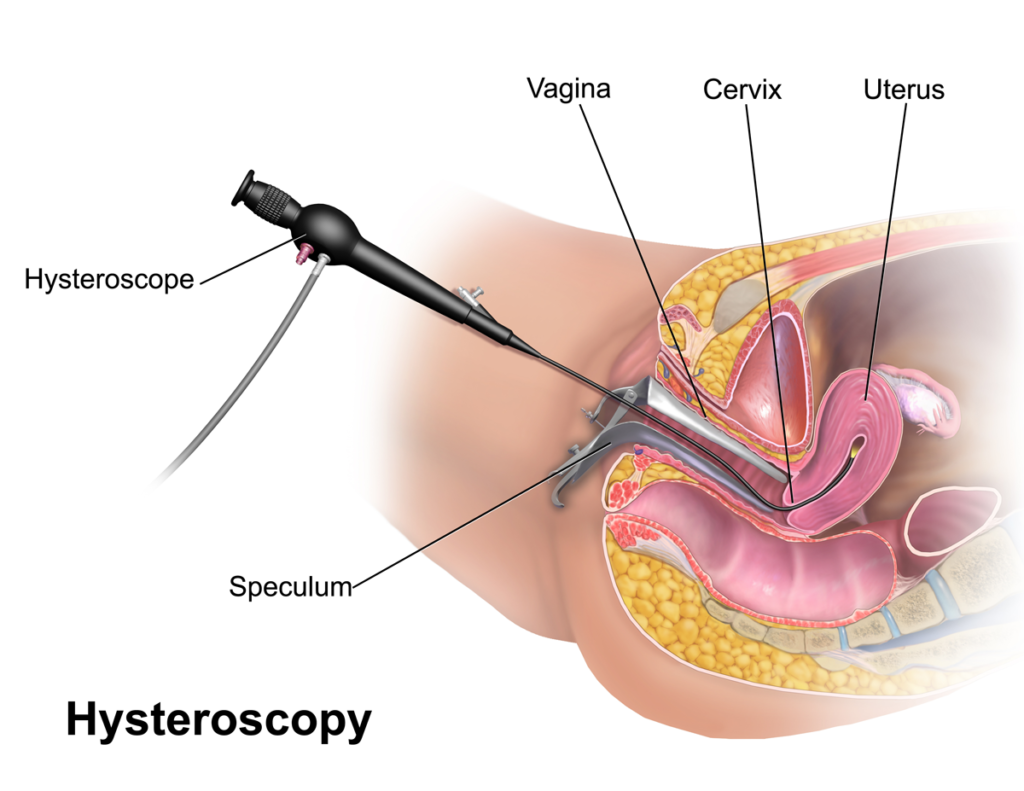- +91 - 9101168739
- hello@drkanchanmurarka.com
- Guwahati, Assam

A Hysteroscopy is a procedure used to examine the inside of the womb (uterus).
It’s carried out using a hysteroscope, which is a narrow telescope with a light and camera at the end. Images are sent to a monitor so the doctor can see the inside of the womb.The hysteroscope is passed into the womb through the vagina and cervix which means no cuts need to be made on the skin.
A hysteroscopy can be used to:
• Investigate symptoms or problems – such as heavy periods, unusual vaginal bleeding, postmenopausal bleeding, pelvic pain, repeated miscarriages or difficulty getting pregnant.
• Diagnose conditions – such as fibroids and polyps (non-cancerous growths in the womb)
• Treat conditions and problems – such as removing fibroids, polyps, displaced intrauterine devices (IUDs) intrauterine adhesions (scar tissue that causes absent periods and reduced fertility) and removing septum ( malformation of uterus which is present from birth)
• Find out whether a woman has cancer of the uterus.
In the past dilatation and curettage (D&C) were used to remove abnormal growths, but now hysteroscopies are carried out instead.
Hysteroscopic Polypectomy is a surgery performed to remove uterine polyps while preserving the uterus. Uterine polyps are a non-cancerous overgrowth of cells in the inner wall or lining of the uterus. It’s carried out using a hysteroscope, which is a narrow telescope with a light and camera at the end. The hysteroscope is passed into the womb through the vagina and cervix and the polyp is removed with the help of scissors or graspers.


A hysteroscopic myomectomy may be used for removal submucous fibroids found in the uterine cavity. With this procedure, fibroids are removed using an instrument called a hysteroscopic resectoscope, which is passed up into the uterine cavity through the vagina and cervical canal. The hysteroscope has a light and camera at the end so the images can be seen on the monitor and the fibroid can be shaved off using a wire loop.
D&C (Dilation and Curettage) with Hysteroscopy are procedures that are performed together. These procedures are used to: Diagnose or treat abnormal bleeding from the uterus, such as heavy or long menstrual periods or bleeding between periods , remove polyps and take biopsy samples from the uterus to find if the patient has cancer.

Menstrual abnormalities, infertility and pregnancy loss or miscarriage can be induced by a number of reasons. One of the common causes is intra-uterine adhesions or IUA. It is the partial or complete obliteration of the uterine cavity due to adhesions. It can be a result of intrauterine infections or vigorous D&C in the past. Intrauterine adhesions (synechiae) can cause amenorrhoea(absent menses), scanty menses(oligomenorrhoea), recurrent pregnancy losses and infertility. In the procedure called hysteroscopic synechiolysis, a hysteroscope is passed into the womb through the vagina and cervix and the adhesion bands are cut with the help of scissors.